
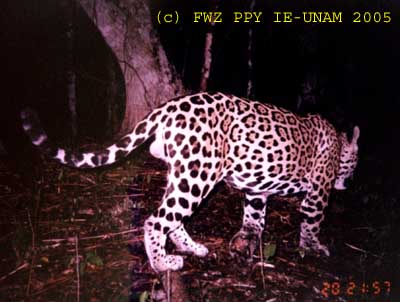
First photographed in May, this jaguar is new to the study in 2005.
Yet repeated photographs of him, shown above, at left
and below, indicate that he may have taken up permanent residence.
|
June
4 - July 4, 2005 |
 |
 |
|
First photographed in May, this jaguar is new to the study in 2005. |
Yet repeated photographs of him, shown above, at left
and below, indicate that he may have taken up permanent residence. |
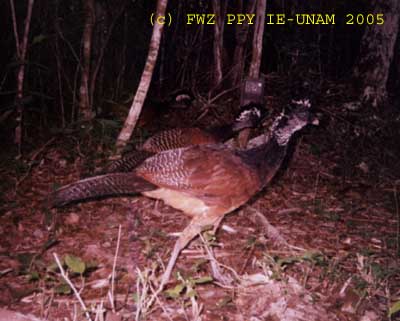 |
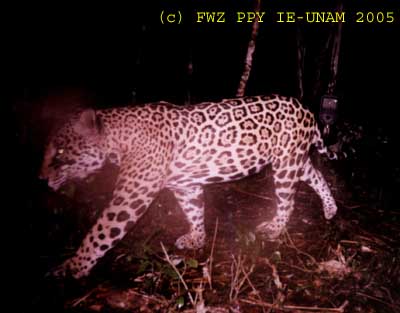 |
|
These birds are female great curassows (Crax rubra).
Compared with the male below, they are mostly brown and have a distinctive
black and white crest of head feathers. |
How do we know this is the same jaguar pictured above?
Compare both sides of the jaguar photographed in may and you will see
that this photo corresponds to the left side, and the photo above corresponds
to the right. |
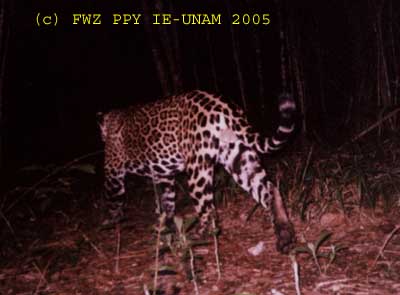 |
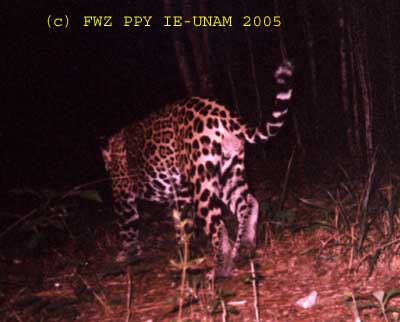 |
|
This appears to be a new jaguar in the area. |
He was photographed again at the same site, four
days later. |
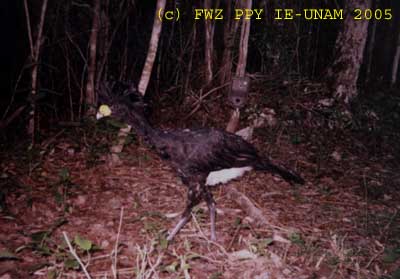 |
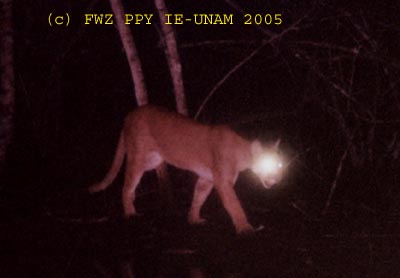 |
The male great curassow is mostly black with a solid
black crest and a yellow patch of bare skin on the face. |
Sometimes the reflected "eyeshine" from
a cat like this puma is captured dramatically in a photograph. |